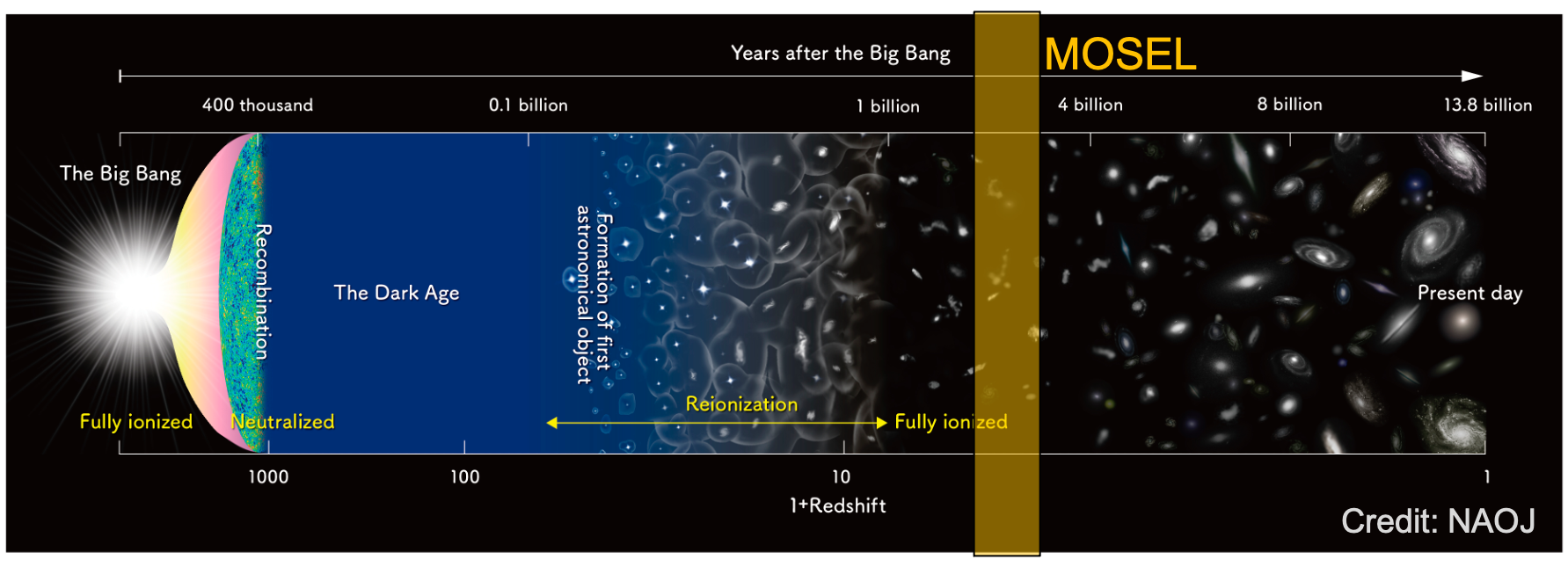Research
MOSEL Survey: Properties of 12 billion year old galaxies
1. Epoch of Reionisation through cosmic noon analogues
The Epoch of Reionisation (EoR) is a key phase transition in our Universe’s history,
where it went from neutral to fully ionised. We will build a benchmark sample of EoR analogues
of super star-forming dwarf galaxies at z=3-4 to estimate the production efficiency of
ionising radiation and their escape fraction in the “first galaxies”. Gupta+2021 in prep.

2. Mass assembly history of massive galaxies
Our current cosmological paradigm says that galaxies initially build up their stellar disk through
in situ star formation, but at some point mergers take over. After that, most stellar mass
is accreted from other galaxies. Our observations show that this transition for massive
galaxies happens between z=2-3. Please see Gupta+2020a
for more details.

Chemical evolution in dense environment
Galaxy clusters are the largest gravitationally bound systems in the Universe. Baryonic processes such as gas removal, gas heating and/or gas accretion makes the galaxy evolution in cluster environment really complex. I use observations and the cosmological hydrodynamical simulation IllustrisTNG to study chemical evolution in cluster environment. Our research shows that signs of environment-dependent chemical evolution appear 9 billion years ago, and even before galaxies fall onto a large-scale cluster halo. Please see Gupta+2016, 2017, 2018 and Alcorn, Gupta+2019.
